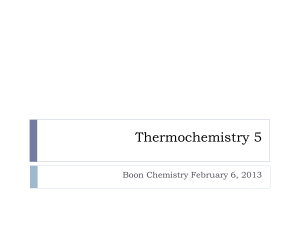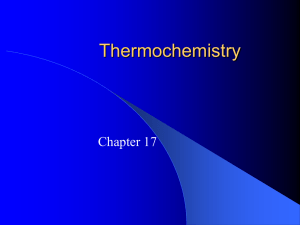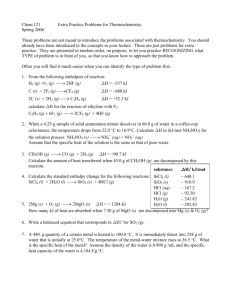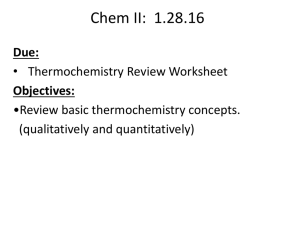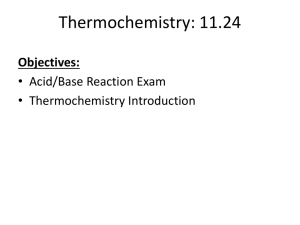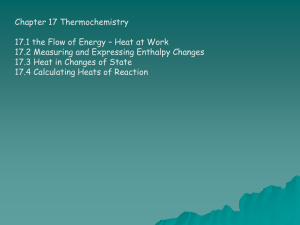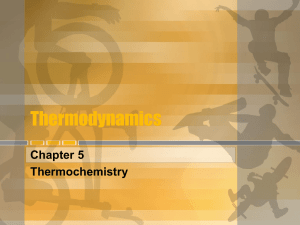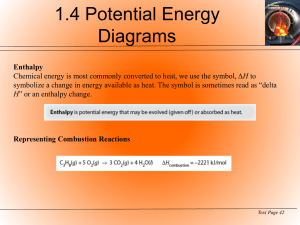thermochemistry_oucomes
advertisement
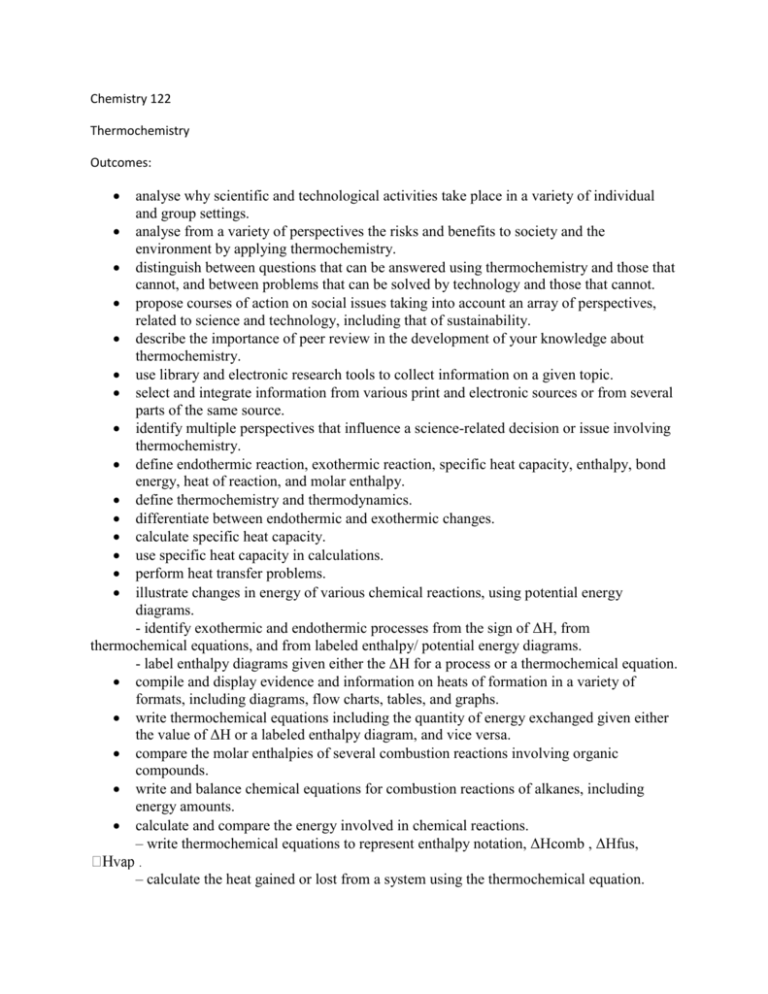
Chemistry 122 Thermochemistry Outcomes: analyse why scientific and technological activities take place in a variety of individual and group settings. analyse from a variety of perspectives the risks and benefits to society and the environment by applying thermochemistry. distinguish between questions that can be answered using thermochemistry and those that cannot, and between problems that can be solved by technology and those that cannot. propose courses of action on social issues taking into account an array of perspectives, related to science and technology, including that of sustainability. describe the importance of peer review in the development of your knowledge about thermochemistry. use library and electronic research tools to collect information on a given topic. select and integrate information from various print and electronic sources or from several parts of the same source. identify multiple perspectives that influence a science-related decision or issue involving thermochemistry. define endothermic reaction, exothermic reaction, specific heat capacity, enthalpy, bond energy, heat of reaction, and molar enthalpy. define thermochemistry and thermodynamics. differentiate between endothermic and exothermic changes. calculate specific heat capacity. use specific heat capacity in calculations. perform heat transfer problems. illustrate changes in energy of various chemical reactions, using potential energy diagrams. - identify exothermic and endothermic processes from the sign of ΔH, from thermochemical equations, and from labeled enthalpy/ potential energy diagrams. - label enthalpy diagrams given either the ΔH for a process or a thermochemical equation. compile and display evidence and information on heats of formation in a variety of formats, including diagrams, flow charts, tables, and graphs. write thermochemical equations including the quantity of energy exchanged given either the value of ΔH or a labeled enthalpy diagram, and vice versa. compare the molar enthalpies of several combustion reactions involving organic compounds. write and balance chemical equations for combustion reactions of alkanes, including energy amounts. calculate and compare the energy involved in chemical reactions. – write thermochemical equations to represent enthalpy notation, ΔHcomb , ΔHfus, – calculate the heat gained or lost from a system using the thermochemical equation. Δ H. calculate and compare the energy involved in changes of state. - calculate the heat gained or lost from a system using the formulas q = mc ΔT and q = n work cooperatively with team members to develop and carry out thermochemistry experiments evaluate and select appropriate instruments for collecting evidence and appropriate processes for problem solving and inquiring design a thermochemistry experiment identifying and controlling major variables determine experimentally the changes in energy of various chemical reactions analyse the knowledge and skills acquired in their study of thermochemistry to identify areas of further study related to science and technology - compare physical, chemical, and nuclear changes in terms of the species and the magnitude of energy changes involved propose alternative solutions to solving energy problems and identify the potential strengths and weaknesses of each - explain, in simple terms, the energy changes of bond breaking and bond formation calculate the changes in energy of various chemical reactions using bond energy, heats of formation, and Hess’s Law apply one of the methods of predicting heats of reactions to your experimentally determined lab values - conduct a Hess’s Law experiment - compare experimental results to theoretical calculations from heat of formation or bond energy data analyse and describe examples where technologies were developed based on understanding thermochemistry

